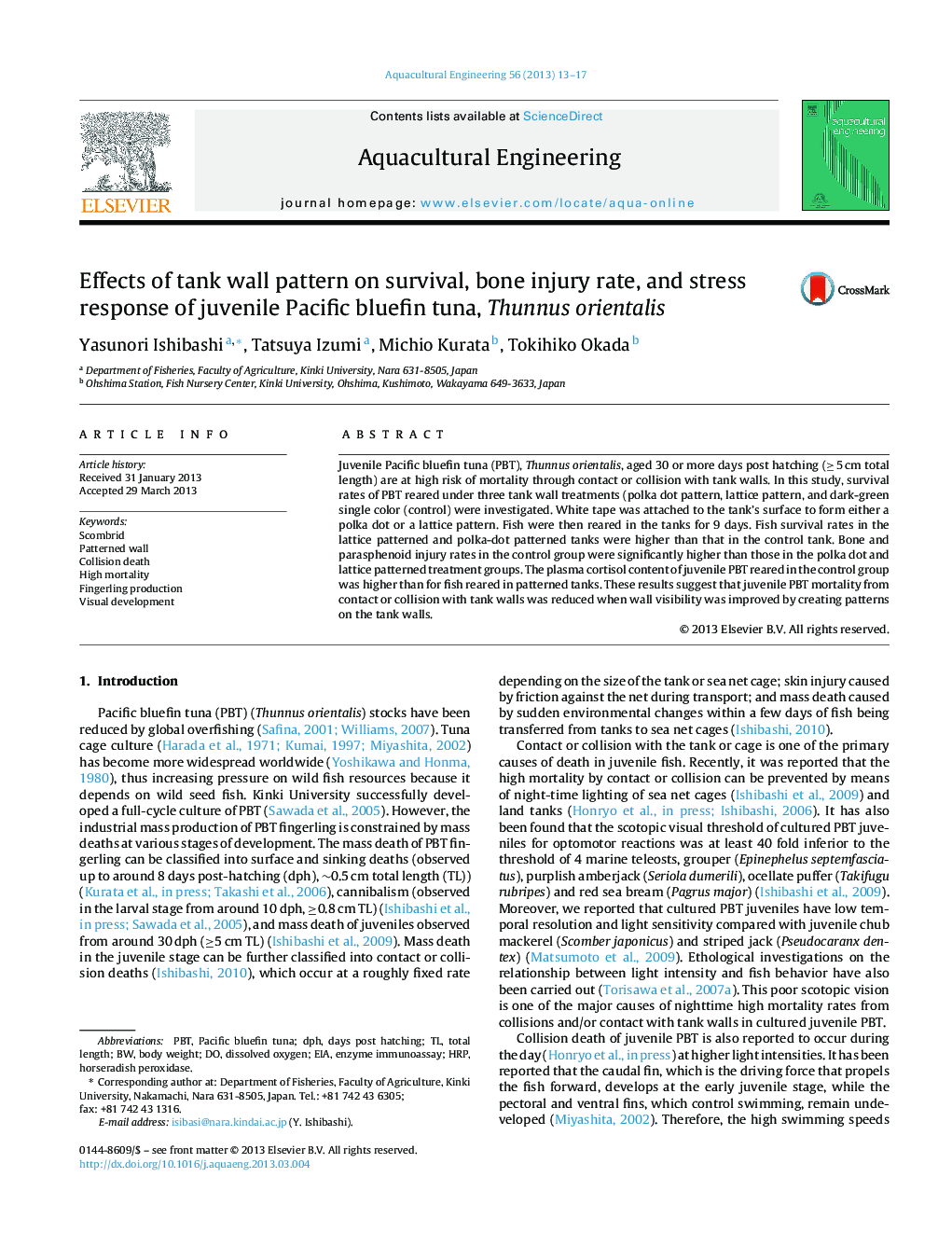| Article ID | Journal | Published Year | Pages | File Type |
|---|---|---|---|---|
| 4527231 | Aquacultural Engineering | 2013 | 5 Pages |
•The juvenile PBT suffers high mortality through contact or collision with tank walls.•Fish mortality, bone injuries, and stress responses decrease in patterned wall tanks.•Survival rates of fish in lattice and polka-dot pattern walled tanks did not differ.•Mass death in juvenile PBT is failure to see the tank wall.
Juvenile Pacific bluefin tuna (PBT), Thunnus orientalis, aged 30 or more days post hatching (≥ 5 cm total length) are at high risk of mortality through contact or collision with tank walls. In this study, survival rates of PBT reared under three tank wall treatments (polka dot pattern, lattice pattern, and dark-green single color (control) were investigated. White tape was attached to the tank's surface to form either a polka dot or a lattice pattern. Fish were then reared in the tanks for 9 days. Fish survival rates in the lattice patterned and polka-dot patterned tanks were higher than that in the control tank. Bone and parasphenoid injury rates in the control group were significantly higher than those in the polka dot and lattice patterned treatment groups. The plasma cortisol content of juvenile PBT reared in the control group was higher than for fish reared in patterned tanks. These results suggest that juvenile PBT mortality from contact or collision with tank walls was reduced when wall visibility was improved by creating patterns on the tank walls.
